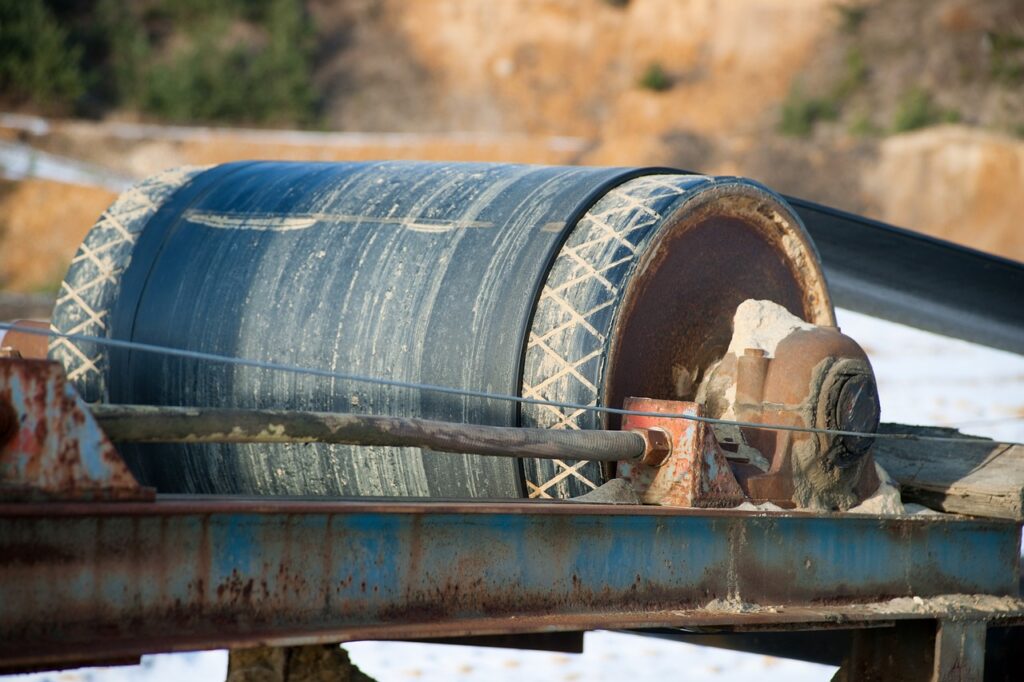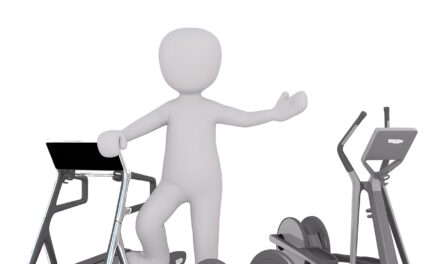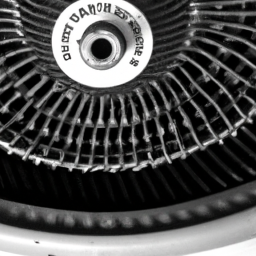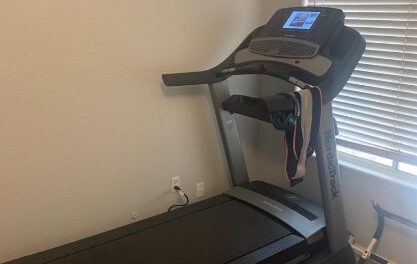Treadmills have become a popular option for fitness enthusiasts, allowing them to get their daily dose of exercise from the comfort of their own homes. But have you ever wondered why the horsepower (HP) of a treadmill motor is significant? Understanding the importance of treadmill motor horsepower is crucial when choosing the right equipment for your workout needs. In this article, we will explore why the horsepower of a treadmill motor matters and how it can impact your overall exercise experience. Whether you’re a beginner or a fitness pro, this information will help you make an informed decision when it comes to selecting the perfect treadmill for your fitness journey.
1. The Basics of Horsepower
1.1 Definition of Horsepower
Horsepower (HP) is a unit of measurement used to quantify the power output of a machine, such as a treadmill motor. It was originally coined by James Watt, an 18th-century Scottish engineer, to compare the power output of his steam engines to that of horses. One horsepower is equal to the amount of work needed to lift 550 pounds one foot in one second.
1.2 The Concept of Power
Power can be defined as the rate at which work is done or the rate at which energy is transferred. In the context of treadmill motors, power refers to the ability of the motor to provide the necessary force to move the treadmill belt at various speeds and inclines.
1.3 How Horsepower Relates to Treadmill Motors
Horsepower is an important consideration when it comes to treadmill motors. The horsepower rating of a motor indicates its capacity to generate the necessary force to move the treadmill belt. A higher horsepower rating generally means that the motor is more powerful and capable of handling heavier loads, higher speeds, and steeper inclines. It directly impacts the performance and user experience of the treadmill.
2. Motor Power and Performance
2.1 Speed and Horsepower
When it comes to speed, the horsepower of a treadmill motor plays a crucial role. A higher horsepower motor can provide the necessary force to maintain higher speeds without straining or overheating. It ensures that the treadmill belt can keep up with the user’s desired pace, whether it’s a brisk walk or a sprint.
2.2 Incline and Horsepower
Incline refers to the angle at which the treadmill belt is inclined. The ability of the treadmill motor to handle incline is directly related to its horsepower rating. A more powerful motor will be able to handle steeper inclines without losing speed or performance. If you plan to incorporate incline training into your workouts, it’s important to choose a treadmill with sufficient horsepower to meet your needs.
2.3 Weight Capacity and Horsepower
Treadmill motors with higher horsepower ratings are typically better equipped to handle heavier user weights. The force required to move the treadmill belt increases with the weight placed on it, and a higher horsepower motor can provide the necessary power to support a larger user without compromising performance or safety.
2.4 Durability and Horsepower
The horsepower rating of a treadmill motor can also indicate its overall durability and longevity. Motors with higher horsepower ratings are often built with stronger components and designed to handle more demanding workouts. They are less prone to overheating or burning out, ensuring a longer lifespan for the treadmill.
3. Choosing the Right Horsepower
3.1 Personal Use vs. Commercial Use
The horsepower requirements for a treadmill motor can vary depending on whether it will be used for personal or commercial purposes. Commercial treadmills, typically found in gyms or fitness centers, will require higher horsepower ratings to withstand heavy usage and accommodate multiple users. For personal use, the horsepower rating can be adjusted based on individual needs and preferences.
3.2 Walking vs. Running
The type of activity you primarily engage in on the treadmill will also influence the horsepower requirements. If you primarily use the treadmill for walking or light jogging, a lower horsepower motor may be sufficient. However, if you are an avid runner or plan to engage in high-intensity interval training (HIIT), a higher horsepower motor is recommended to provide the necessary power and performance.
3.3 User Weight and Intensity
Consider your body weight and the intensity of your workouts when determining the appropriate horsepower rating for a treadmill motor. Heavier individuals may require a higher horsepower motor to handle the added load and provide adequate performance. Similarly, if you engage in intense workouts with high speeds and steep inclines, a higher horsepower motor will be necessary to ensure smooth and consistent performance.
3.4 Continuous vs. Peak Horsepower
When shopping for a treadmill, it’s important to distinguish between continuous horsepower (CHP) and peak horsepower (PHP). Continuous horsepower refers to the sustained power output the motor can maintain during normal operation. Peak horsepower, on the other hand, represents the maximum power output the motor can achieve but only for a short duration. For most users, a higher continuous horsepower rating is more relevant and indicative of the motor’s overall performance capabilities.
3.5 Noise and Heat Generation
Higher horsepower motors tend to generate more noise and heat during operation. If you value a quieter workout environment or are concerned about excess heat buildup, you may need to strike a balance between horsepower rating and noise/heat generation. Some treadmill models utilize advanced cooling systems or noise reduction technologies to mitigate these concerns.
3.6 Energy Efficiency
Another factor to consider is the energy efficiency of the treadmill motor. Higher horsepower motors generally require more energy to operate, which can lead to increased electricity consumption and higher utility bills. However, advancements in motor technology have allowed for more energy-efficient options that provide optimal performance without excessive energy consumption.

This image is property of pixabay.com.
4. Horsepower Ratings and Specifications
4.1 Understanding Horsepower Ratings
When evaluating treadmill options, it’s important to understand how different manufacturers rate the horsepower of their motors. Some manufacturers may provide accurate and reliable ratings, while others may exaggerate or misrepresent the horsepower to make their products appear more powerful. Researching reputable brands and reading customer reviews can help you verify the accuracy of the horsepower ratings provided.
4.2 Peak Horsepower vs. Continuous Horsepower
As mentioned earlier, peak horsepower (PHP) and continuous horsepower (CHP) are two common ratings used to describe treadmill motors. Peak horsepower represents the maximum power output a motor can achieve, but it is not sustainable over extended periods. Continuous horsepower, on the other hand, reflects the motor’s sustained power output during normal operation. It is crucial to focus on the continuous horsepower rating as it provides a more accurate representation of the motor’s performance capabilities.
4.3 Evaluating Horsepower Specifications
When comparing treadmill models, it’s important to consider the horsepower rating relative to the other specifications and features of the treadmill. A higher horsepower motor may be advantageous, but it’s essential to ensure that the overall build quality, construction, and components of the treadmill are also of high quality. An underpowered motor in a well-constructed treadmill may outperform a more powerful motor in a poorly constructed treadmill.
5. Overlooked Factors
5.1 Motor Components and Quality
While horsepower is an important consideration, it’s equally important to assess the overall quality of the motor components. A well-built and high-quality motor will contribute to its performance, durability, and overall lifespan. Look for treadmill motors that are made with durable materials, have sufficient cooling systems, and are backed by warranties.
5.2 Motor Control
Motor control is another factor that can impact the performance and user experience of a treadmill. Advanced motor control systems can help regulate speed and incline adjustments more smoothly and accurately. Such systems contribute to a more comfortable and enjoyable workout experience.
5.3 Cooling Systems
Treadmill motors generate heat during operation, and excessive heat can lead to decreased performance and even damage to the motor. Look for treadmills that feature effective cooling systems to dissipate the heat and prevent overheating. This will contribute to the longevity and reliability of the motor.
5.4 Advanced Features Impacting Performance
Some treadmill models may incorporate advanced features that enhance the overall performance and functionality of the treadmill. These features can include things like variable speed settings, pre-programmed workout programs, heart rate monitoring, and interactive displays. While these features do not directly impact the horsepower of the motor, they can enhance the overall user experience and make workouts more engaging and effective.
6. Impact on Performance and User Experience
6.1 Smooth and Consistent Speed
A treadmill with an appropriate horsepower rating will be able to maintain a smooth and consistent speed throughout your workout. This ensures that you can maintain your preferred pace without interruption or lag in performance, enhancing the overall workout experience.
6.2 Capability for Incline and Decline
For those seeking a treadmill with incline or decline features, horsepower plays a crucial role. Higher horsepower motors can handle steeper inclines or declines more effectively, providing a more realistic and challenging workout experience. The motor’s power ensures that the treadmill can adjust the incline or decline smoothly and without strain.
6.3 Reduction in Motor Strain
An appropriately sized motor will not be strained or overworked during your workouts. This is crucial for the longevity and reliability of the treadmill. A motor that is continuously struggling to keep up with the demands of the user may result in premature wear and tear, leading to costly repairs or replacement.
6.4 Enhanced Running Experience
For runners, a treadmill with sufficient horsepower is essential. A motor that can handle higher speeds and more intense workouts will provide a more enjoyable and comfortable running experience. It allows runners to push their limits and achieve their fitness goals without any limitations.
6.5 Longer Lifespan of the Treadmill
Investing in a treadmill with an appropriate horsepower rating can contribute to its overall lifespan. A well-powered motor that doesn’t strain or overheat will last longer, providing you with years of reliable use. This saves you money in the long run, as you won’t have to replace or repair the treadmill as frequently.
6.6 Safety of the User
A treadmill with an insufficient horsepower rating may pose safety risks to the user. If the motor is unable to handle the load placed on it, it may result in abrupt stops or failures while in use. This can lead to accidents or injuries. Choosing a treadmill with the appropriate horsepower ensures safer workouts and a reduced risk of malfunction.
7. Potential Limitations of High Horsepower
7.1 Increased Cost
Treadmills with higher horsepower motors generally come with a higher price tag. This is due to the increased power and performance capabilities they offer. However, it’s essential to assess your needs and consider whether the additional cost is justified for your specific usage requirements.
7.2 Space and Size Requirements
Higher horsepower motors often require larger and heavier treadmills to accommodate the added power. If you have limited space or specific size requirements, it’s important to consider the dimensions and weight of the treadmill before making a purchase. Ensure that it can fit comfortably in your designated workout area.
7.3 Noise Levels
As mentioned earlier, higher horsepower motors tend to generate more noise during operation. If you are sensitive to noise or prefer a quieter workout environment, it’s important to consider the noise levels of a treadmill before purchasing. Some treadmill models utilize noise reduction technologies to minimize this issue.
7.4 Electricity Consumption
Higher horsepower motors generally consume more electricity compared to lower horsepower options. If you are concerned about energy efficiency or have budget constraints, it’s important to consider the potential increase in electricity consumption when choosing a treadmill with a higher horsepower motor.
8. Comparing Horsepower Across Brands and Models
8.1 Researching Horsepower Information
When comparing horsepower across different treadmill brands and models, it’s crucial to do thorough research. Look for reliable sources of information, such as manufacturer websites or reputable fitness equipment review sites. Compare the horsepower ratings of different models within your budget range to find the best fit for your needs.
8.2 Understanding Industry Standards
It’s essential to understand that not all manufacturers may use the same standards when rating horsepower. Some may provide accurate ratings, while others may exaggerate the numbers. Familiarize yourself with industry standards and consult expert reviews to get a better understanding of how different brands and models stack up in terms of horsepower.
8.3 Real-World Performance vs. Advertised Horsepower
In some cases, the advertised horsepower of a treadmill may not accurately reflect its real-world performance. This can be due to various factors, such as the quality of the motor components, the effectiveness of cooling systems, or the overall build quality of the treadmill. Reading customer reviews and seeking feedback from experienced users can help you gauge the actual performance of a treadmill despite its advertised horsepower rating.
9. Common Misconceptions About Horsepower
9.1 More Horsepower is Always Better
While higher horsepower can offer certain advantages in terms of performance, it’s not always necessary or beneficial for everyone. A treadmill with excessive horsepower may consume more electricity, generate more noise, and come with an inflated price tag. It’s important to assess your specific needs and usage requirements when determining the appropriate horsepower for your treadmill.
9.2 Peak Horsepower Guarantees Greater Performance
Some treadmill manufacturers may advertise peak horsepower ratings to make their products appear more powerful. However, peak horsepower is not an accurate representation of the motor’s sustained performance capabilities. It’s crucial to focus on the continuous horsepower rating for a more accurate assessment of a treadmill’s performance potential.
9.3 Horsepower Is the Sole Determinant of Treadmill Quality
While horsepower is an important factor to consider when evaluating treadmill quality, it is not the only determinant. Factors such as build quality, durability, motor components, and additional features all contribute to the overall quality and performance of a treadmill. A high horsepower motor in a poorly constructed treadmill may not provide the desired experience or longevity.
10. Conclusion
The horsepower rating of a treadmill motor is a significant consideration when choosing the right treadmill for your needs. It impacts the speed, incline capabilities, weight capacity, durability, and overall performance of the treadmill. By understanding the basics of horsepower, evaluating your individual requirements, and considering other factors such as motor quality and construction, you can make an informed decision and find a treadmill that suits your fitness goals and preferences. Remember, horsepower is just one piece of the puzzle when it comes to selecting the perfect treadmill for your workouts.





